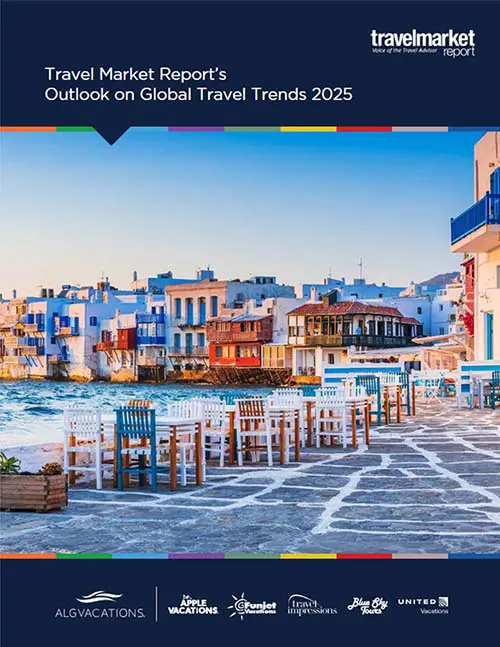Meetings 2012: A Year of Scandal and Renewed Vigor
by Harvey ChipkinA scandal may have been the biggest meeting story in 2012, but there were a lot of other positive stories in the industry – ranging from an increased emphasis on advocating the importance of meetings to healthier banquet cuisine and standards for sustainable meetings.
Here is a look at some of the top news and trends that Travel Market Report covered last year.
IN THE NEWS
GSA scandal: Perhaps the biggest story of 2012 involved a meeting that took place in 2010 – a Las Vegas meeting of a Government Services Administration office that featured, most memorably, a $75,000 bike-building session, among other expenditures considered over the top. That led to Congressional hearings and threats of restricting government meetings – with possible impact on private sector meetings. A concerted effort by the industry managed to calm the furor and, seemingly, avoid any hastily conceived legislation that may have put a damper on the industry’s struggling recovery.
(See Story: “Industry Goes to the Mat Over GSA Scandal”)
Meetings Advocacy: U.S. Travel Association, representing the entire travel industry, joined the movement to demonstrate how important meetings are to businesses – and to the economy. Industry leaders realized that they could not wait for a crisis like the GSA scandal to respond but had to be proactive and prepared.
(See story: “Travel Industry to Respond to GSA Scandal at D.C. Summit”)
Spotlight on MPI: Several stories around Meeting Professionals International made headlines in 2012. Among them:
• Bruce MacMillan resigned as president and CEO after a six-year stint. Cindy D’Aoust, MPI’s COO, is leading the association on an interim basis. No new leader has been selected as the year comes to an end.
(See story: “CEO MacMillan Resigns From MPI”)
• Representatives of international MPI chapters made efforts to make sure that the association paid more attention to its membership outside of the U.S.
(See story: “MPI Urges Members to Take Action on Meetings Advocacy”)
Marriott acquires Gaylord Management. In a complicated transaction, Marriott took over management of the Gaylord hotels, which are massive, meetings-focused properties. Some planners were concerned about changes in management at these hotels which are very popular with planners.
(See story: “Gaylord-Marriott Deal Raises Planners’ Concerns”)
Streamlining billing and RFP processes. Hotel companies are making efforts to improve their systems – using technology or dealing with the unforeseen consequences of technology. Hyatt introduced a Group Billing system that offers daily updates on meeting spending and makes meeting bills easier to read and understand. Hyatt and other companies are also trying to mitigate the proliferation of RFPs that has resulted from the ease of electronic queries.
(See story: “Hyatt Launches Streamlined Group Billing Process”)
New Green Meeting Standards. The Convention Industry Council’s Accepted Practices Exchange (APEX) and the American Society for Testing and Materials International (ASTM) developed the new APEX/ASTM Environmentally Sustainable Meeting standards with the goal of attaining consistency in green meeting criteria.
TOP TRENDS
Hotel service issues. After years of hotels reducing staffs, especially experienced meetings and banquet managers, planners reported new or aggravated challenges in their dealings with hotels, especially those further down the rate scale. Some planners began making it a practice to research the longevity of hotel meeting staffs before booking. In some cases, planners ended up doing the jobs of hotel staff to make up for shortcomings.
(See story: “Hotel Service Issues Causing Big Headaches for Planners”)
Reinventing F&B. The culinary demands of planners and attendees are changing rapidly because of increased attention to healthy eating, special diets and other issues. In one example, Hyatt adopted a “Thoughtfully Sourced, Carefully Served” approach that included three pillars: healthy people (portion controlled, balanced offerings and natural ingredients); healthy planet (sustainable practices) and healthy communities (sourcing from local suppliers as well as sharing knowledge at schools and actively supporting famers markets and other events).
(See story: “Made to Order: Meetings Meal Trend Takes Root”)
More creativity. As ROI becomes central to meetings, planners looked to new methods of enhancing the meeting experience. TJ Johnson, conferences manager at the International Legal Technology Association, used creative techniques to keep the meeting experience fresh without spending additional money.
(See story: “A Hats-On Approach to Creative Meetings”)
Focus on ethics. Some issues are perennial, but in a challenging economy they come to the fore. One hot issue: fam trips by planners who have no intention of holding a meeting in the destination, etc. Another: “freebies” provided by destinations and venues to planners.
(See story: “Meeting Planning Ethics: Don’t Be a Fam Scammer”)
Event Camps. Event Camps are taking hold as a way for meetings professionals to test new technologies, experiment with meeting styles and think about the way meetings might look in the future. The first EventCamp was held in New York City in 2009, and there have been a number since then, with more coming up.
(See story: “Low-Cost Event Camps Catch On With Innovative Approach”)



















